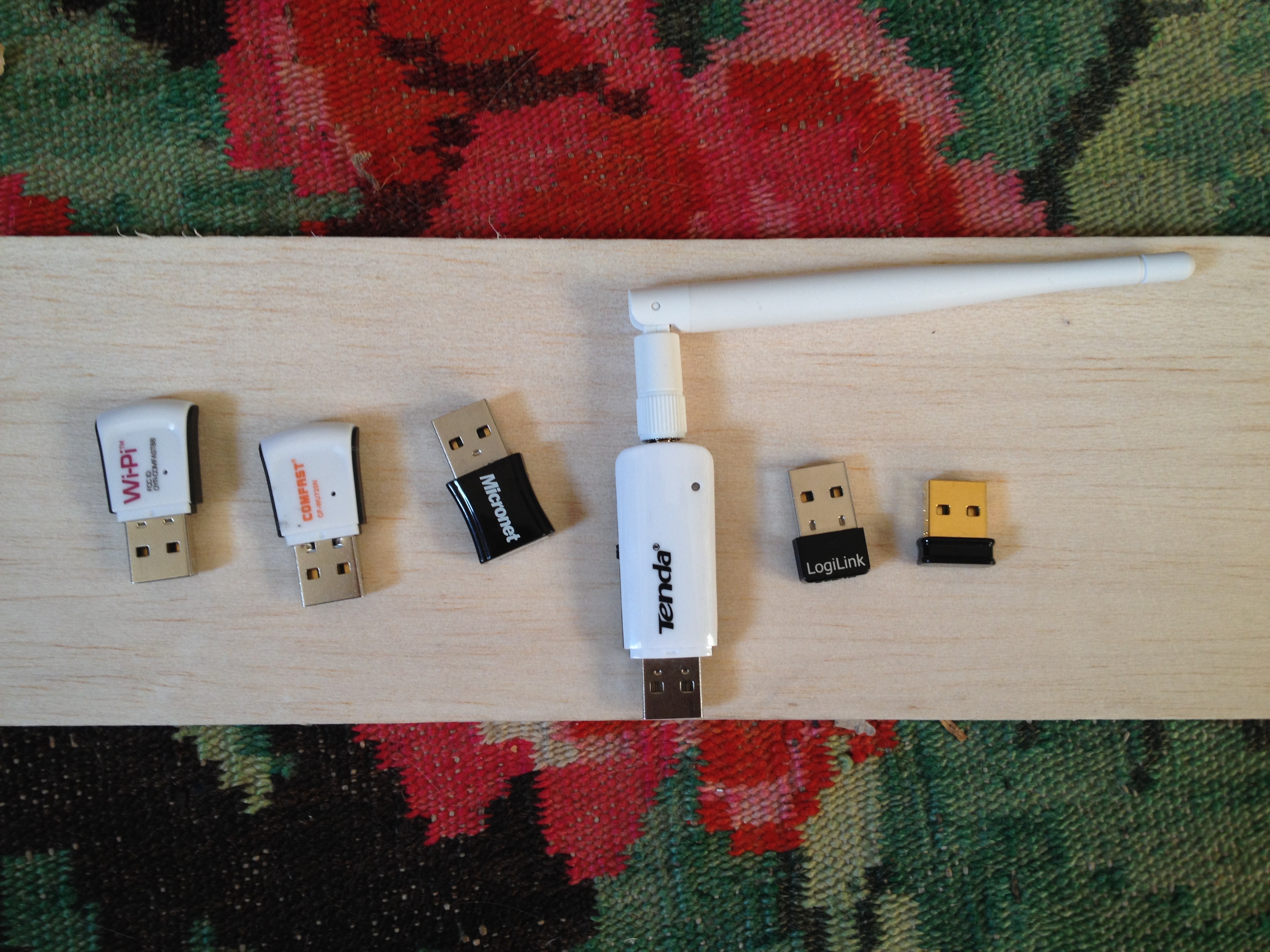A quick analysis of wifi cards for using a Raspberry Pi as an access point
When Radiodan can't access the web, it throws up an access point (AP) created by the Pi: you connect directly to that and it displays the available wifi points in a webpage as a captive portal, and asks you to add the password for the one you want. It's not easy to get credentials for wifi to objects with no user interface, and this is the best one we've found so far (Chromecast does something similar).
However our home tests suggest that the many varieties of wifi USB cards and access points cause problems of two major kinds. One a general problem of Radiodan accessing the internet - the wifi access point in a house might just be too far away. The other is that some wifi cards don't seem to work as access points properly, and we wanted to get to the bottom of where the problems were there, as identified with the kind help of Giles Booth (@blogmywiki). This is so that we can recommend wifi cards to go with Radiodan or at least so we can say which are known to work.
I've started on the second problem here. I had 6 USB wifi cards in the house of various kinds: left to right: Wipi, Comfast, Micronet, Tenda, Loglink, Edimax

Here's what I found for each.
Test setup:
- 5 metres from an apple wifi point
- Mac OS 10.9.5 Macbook Air laptop
- 30 cm between laptop and Pi
Test conditions:
- Radiodan clean image, boot up, try and connect to the radiodan-configuration AP from laptop
Results
| Name | Result | libusb output |
| WiPi | Network appears in 3m 10s. | Bus 001 Device 004: ID 148f:5370 Ralink Technology, Corp. RT5370 Wireless Adapter |
| Comfast cf-wu720n | Network appears in 3m 10s. | Bus 001 Device 007: ID 148f:5370 Ralink Technology, Corp. RT5370 Wireless Adapter |
| Micronet SP907NS | Nothing after 4 minutes | Bus 001 Device 006: ID 0bda:8176 Realtek Semiconductor Corp. RTL8188CUS 802.11n WLAN Adapter |
| Tenda with ariel w311U+ | Network appears in < 3m | Bus 001 Device 009: ID 148f:3070 Ralink Technology, Corp. RT2870/RT3070 Wireless Adapter |
| Loglink wl0084B | Network appears but I can't connect to it | Bus 001 Device 008: ID 148f:5370 Ralink Technology, Corp. RT5370 Wireless Adapter |
| Edimax | Nothing after 4 minutes | Bus 001 Device 005: ID 7392:7811 Edimax Technology Co., Ltd EW-7811Un 802.11n Wireless Adapter [Realtek RTL8188CUS] |
So basically I found two different manufacturers, Ralink and Realtek and the Realtek ones don't work as APs with our setup.
It should be possible to get the Realtek ones working - there's a detailed description here - and I managed to get a network showing up using those instructions but within our framework, but I couldn't connect to it - so we'll have to test this some more.
How to find your wifi card's chipset
The best way it to plug it into a Raspberry pi that you are already connected to and type:
$ pi@radiodan ~ $ lsusb
This will give you a list of everything connected to USB, in my case (I had two wifi cards connected):
Bus 001 Device 002: ID 0424:9514 Standard Microsystems Corp. Bus 001 Device 001: ID 1d6b:0002 Linux Foundation 2.0 root hub Bus 001 Device 003: ID 0424:ec00 Standard Microsystems Corp. Bus 001 Device 004: ID 148f:5370 Ralink Technology, Corp. RT5370 Wireless Adapter Bus 001 Device 006: ID 0bda:8176 Realtek Semiconductor Corp. RTL8188CUS 802.11n WLAN Adapter
On Mac OS X you can look in apple menu -> about this mac -> more info -> system report and then click on USB - but you'll need to google the vendor name and id to get the chip.